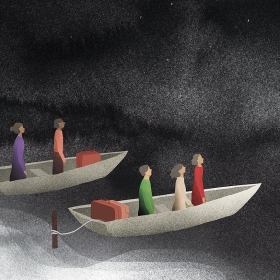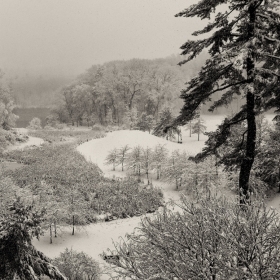Work at the College for any length of time, and you’ll find yourself hearing news from a particular region of the world and thinking, “Who are our Wellesley people there? How are they faring? Do they need help?”

Illustration by Jon Krause c/o theispot.com
I had been at Wellesley 4½ years when hijacked planes slammed into the World Trade Center towers on Sept. 11, 2001. All the details of that day on campus are seared into my memory: staring at a TV in disbelief with colleagues, emailing students to check on them, answering the phones at the Alumnae Office, which began to ring incessantly. The calls were from alumnae looking for other alumnae, hoping to learn whether dear friends were safe. In that era before social media, we spent days helping to locate and connect people.
It was one of those experiences that drove home the fact that Wellesley women are everywhere, and that most big news stories have some kind of Wellesley connection. In the years since, unfortunately, we’ve had wildfires and hurricanes, earthquakes and tsunamis, terrorist attacks and mass shootings, and elections, coups, and protest marches in many areas of the world. Work at the College for any length of time, and you’ll find yourself hearing news from a particular region of the world and thinking, “Who are our Wellesley people there? How are they faring? Do they need help?” And when they are in contact, which they often are, the news is given a whole new human face.
Take Hurricane Harvey, for instance. No matter how many times you watch time-lapse clips of overpasses disappearing under floodwaters, the urgency of the situation becomes entirely more tangible when you hear that a member of the class of ’00 and her family endured hours in their home waiting to be rescued as sewage-filled water seeped from room to room. The kicker: They had to buckle their screaming 2-year-old into her high chair for five hours to keep her safe. (I asked Debbie Blumberg ’00 to share her story: See “Waters Rising.”)
Or another example—the debate on immigration that rages in this country. Hearing even one student’s or one alum’s story helps move the discussion out of the abstract and into the realm of people we care about, who are part of our community.
I recently got to know an extraordinary student, an immigrant who became a U.S. citizen some time ago. She gave me a glimpse of the lives of farm workers picking fruit in fields on the West Coast. As a child, she was afraid of being walloped by the apricots her father was tossing down to her to pack and kept closing her eyes. “It’s OK to be afraid,” he said, “but you can’t let fear blind you.”
From this student, I learned how kids of farm workers from all over the world—Russians, Mexicans, many others—built a community on the soccer field. “We decided we didn’t need to speak the same language,” she says. “We just needed to kick the ball.” (Maybe we adults should take note?) And from her, I learned what an impact a gift of kindness can have. As a child, this student struggled to learn English. An elementary-school teacher saw her difficulties and gave her an English dictionary that became her constant companion—and a lifeline. She became a truly voracious reader, and, of course, eventually ended up at Wellesley. Full of intellectual curiosity, energy, and genuine warmth, she is an absolute joy to be around.
Our extended community is full of people with immigration stories, and those narratives are as diverse and complex as our community itself. They are stories of separation and reunion, of identities reforged, and a sense of home rebuilt. You’ll find six of them in “Immigrant Journeys.”
These stories—and many others like them—matter. Let’s not forget the people behind the news reports.


